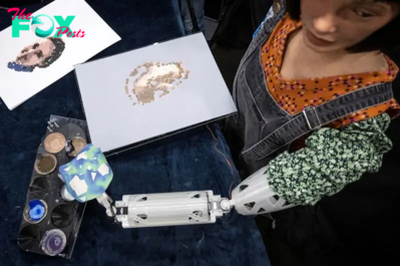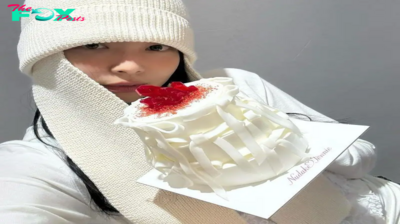Lifestyle
The Dr. Shing-Yiu Yip Collection of Classic Chinese Furniture Headlines Bonhams’ New Asia Headquarters Opening
Joining us at Prestige, Dr. Yip walks us through his half-century-long journey of collecting Chinese relics, how he finds the best pieces, the relationships he’s formed along the way, and what makes this Bonhams auction so special.

To commemorate the opening of Bonhams’ new Asia headquarters in Hong Kong at Six Pacific Place, the esteemed auction house is kickstarting a new era with its inaugural sale in partnership with Dr. Shing-Yiu Yip to launch the Dr. Shing-Yiu Yip Collection of Chinese Furniture, regarded by many as one of the most exceptional private collections of Ming dynasty furniture in the world.
Among the 15 pieces on auction is the star of the leading lot – an extremely rare marble-inset Huanghuali five-legged high waist round ji table from the late 16th to early 17th century – as well as a massive Huanghuali painting table, a pair of Huanghuali sloping-stile wood-hinged cabinets, an intricately carved Huanghuali ‘Phoenix’ Banzhuo table, a pair of Huanghuali horseshoe armchairs and an exquisite Wumu and Huanghuali bookcase. The auction will take place on November 27, preceded by a preview from November 23 to 26.

What initially sparked your interest in Chinese art and – more specifically – Ming dynasty furniture?
I came back to Hong Kong in 1966 after my training in dermatology in the United States, and I started a practice. At the time, there were very few dermatologists here – maybe just three or five – and so the practice bloomed. After just three years, I was already very stable, and I wondered: “Is this going to be my whole life? Just seeing patients and earning money?” I realised I needed a hobby, and having spent 12 years abroad, I figured I better start learning about Chinese History and Chinese culture. At the time, both my fifth and seventh uncle were collectors, so I began to take an interest in it. When my fifth uncle passed away, he left me large plaque of “攻玉山房” and I also inherited about 30 pieces of jade, and these are what initially sparked my interest in collecting Chinese art and relics.
How was your experience from those early days of collecting?
I was very fortunate that in the late ‘60s, I was introduced to Mr. J.M. Hu, who is a very famous collector of porcelain. I found jade very hard to appreciate, but it was very easy to do so with porcelain, so I started learning all about it. But the trouble in collecting them was that they’re very expensive – porcelain has always been very expensive, so after a while I turned to calligraphy and paintings. With those, I drifted along until around 1987. In the ‘80s, as China opened up, Ming furniture began to flow into Hong Kong, and this city became its main depot. My collecting jade, porcelain, calligraphy and paintings didn’t amount to much, but I was again very fortunate to meet another expert: Grace Wu, who knew everything about Ming furniture. I began buying pieces, and I was very enthusiastic about it – so much so that within three years, I collected 68 pieces and exhibited them for the first time at the Chinese University of Hong Kong. Wang Shi-Xiang, the doyen of Ming furniture from Beijing, came to open my exhibition, and I got to know him as he told me that it was the first private exhibition of Ming furniture in the world. He was very moved, and that spurred my interest further.

What guiding principles did you have in selecting pieces for your collection? Were there specific qualities you looked for?
Over the years of collecting, I’ve learned some very specific principles. The most important rule is that the quality of the pieces has to be good to excellent, and they must be authentic. By this, I mean that it’s of the period of Ming to early Qing; it’s actually a very short period of 150 years. The wood they used were of very specific types, like Zitan, the most precious of the lot, or Huanghuali, the main material most used. In assembly, they have to adhere to a certain type of joinery, which requires a lot of expertise. The emphatic point is that it’s not only about the style of the furniture, but about the joinery and techniques used to craft them, which ends up dictating the style. Only from there does the craftsman add to it. Because of these traits, Ming furniture is one of the most revered types of furniture in the world.
Can you tell us about your relationship with Grace Wu and how that iNFLuenced your collection?
She was very good at introducing me to the world of Ming furniture, because I didn’t know anything about it then. She explained to me the various types of furniture and their importance, so she wasn’t just good at selecting great pieces – she was also exceptional at teaching people about them. In a way, she became my mentor, and she helped me build a very comprehensive collection. We are very good friends, and I’ve now known her for 36 years.

Among the 15 pieces being auctioned, do you have a personal favourite?
I like them all, of course, but my favourite is the half table, or the Banzhou. The decorations are very distinctive, and it’s almost identical to the one Wang Shi-Xiang selected for the cover of his encyclopaedic work on Ming furniture. It’s a beautiful piece, with plenty of details.
The marble-inset huanghuali five-legged high waist round ji table is the leading lot. What makes this piece stand out among the collection?
As an incense table, the round ji table is the star of the lot because of its use for religious purposes, which make them sacrosanct. Another reason it’s unusual is because of its shape: today we see round tables everywhere, but within Ming furniture, only incense tables are round. All other tables are square or rectangular shaped. Even more special is that this table is only one of two we know of that exists, the other being in the Santos collection in the Philippines. This is extremely rare.

When you put these pieces up for auction, does any part of you think you’ll miss them or find it hard to let go of?
I will definitely miss them. After so many years, you become a little sentimental, and you grow attached to them. But at the age of 90 and with a very comprehensive collection of over 100 pieces, I feel even if I want to leave some to my family, just a dozen pieces will do, so I have to part with them. That said, I still carefully select pieces which represent the entire range of Ming furniture – six or seven types. People always say you sell what you no longer want, but none of them are pieces I don’t want. Of course, you have favourite pieces, but they’re all very good, so it’s not easy to part with them in that sense.
What are some of the most rewarding aspects of your collecting journey?
Not only do I love them as they are wonderful pieces, but they are also a symbolic representation of the culture of the time. It’s a material representation of the culture of the late Ming dynasty. Traditionally in that period, jade is the most treasured thing, followed by porcelain, and then Ming furniture. Nowadays, porcelain is the classic, but in fact they were relatively unknown until only 50 years ago when Wang Shi-Xiang and the like came along, so I’m very happy to have been part of the movement in promoting them. I’m very proud about that, but also feel very humbled by it.

What do you hope collectors and enthusiasts will take away from this upcoming auction?
I hope they will take away what I call the spirit of collecting. First of all, you’ll take away a nice piece which can last your entire life, but secondly and more importantly, you’re taking with you a piece of Chinese History and culture.
I was in a watch dealership not long ago and there was a woman looking to buy a Rolex, but instead of asking about the movement or the heritage of the model, the first question she asked was whether the watch would keep its value over time. To me, that’s a very Hong Kong thing to do. What are your thoughts on this?
That is indeed a very Hong Kong thing, and this is something very important to discuss. Of course, you need money to buy things, and the really good pieces will be more expensive, so it’s important to think about whether you can afford it and whether it’s worth its value. But it’s not only about monetary value. It’s also about what a piece represents. A Rolex or a Patek Philippe is more than just a great watch: it can represent all of horology and watchmaking as a culture. That’s what I consider the cultural value, and it’s something you should also consider on top of just monetary value. On the flip side, some things people don’t like and are very cheap, but they’re absolutely terrific, so it’s not just limited to people with deep pockets – those that are on a budget can think about this aspect too.

Finally, do you have any advice for aspiring collectors who are just embarking on this journey?
If you look at this collection of 15 pieces, if I was coming as a potential buyer and I had the money, I’d buy them all. It’s already a representative group of items. Of course, if you don’t work that way, that’s fine too, and I personally have divided the collection into three categories: the best pieces that can stand alone, the ones that work in pairs, and the smaller items that still have a lot of character. It’s all about finding what’s right for you and your preferences.
-

 Lifestyle18m ago
Lifestyle18m agoNew Party Footage of Busta Rhymes Grooving with Diddy and Male Construction Workers Goes Viral.Linh
-

 Lifestyle19m ago
Lifestyle19m agoUnseen Party Photos with Diddy, Kim Kardashian, and Kylie Jenner Reveal Surprising Moments That Change Everything.Linh
-

 Lifestyle1h ago
Lifestyle1h agoIn defence of fangirls | The Express Tribune
-

 Lifestyle5h ago
Lifestyle5h ago“No Wonder”: Nimrat Kaur speaks out about dating rumors with Abhishek Bachchan, amid divorce rumors with Aishwarya Rai Bachchan, viral statement “I can do anything to…see more.ngocchau
-

 Lifestyle6h ago
Lifestyle6h agoA hero for the common man | The Express Tribune
-

 Lifestyle6h ago
Lifestyle6h agoOur tax dollars should be funding care not killing' | The Express Tribune
-

 Lifestyle10h ago
Lifestyle10h agoBREAKING: One Direction stars gather at former member Liam Paynes funeral, and a surprise meeting between Kate Cassidy and Cheryl Cole sparks see more.cau
-

 Lifestyle10h ago
Lifestyle10h agoBREAKING NEWS: Keanu Reeves Refuses to Present Whoopi Goldbergs Lifetime Achievement Award: Shes Not a Good Person Full story.cau

























